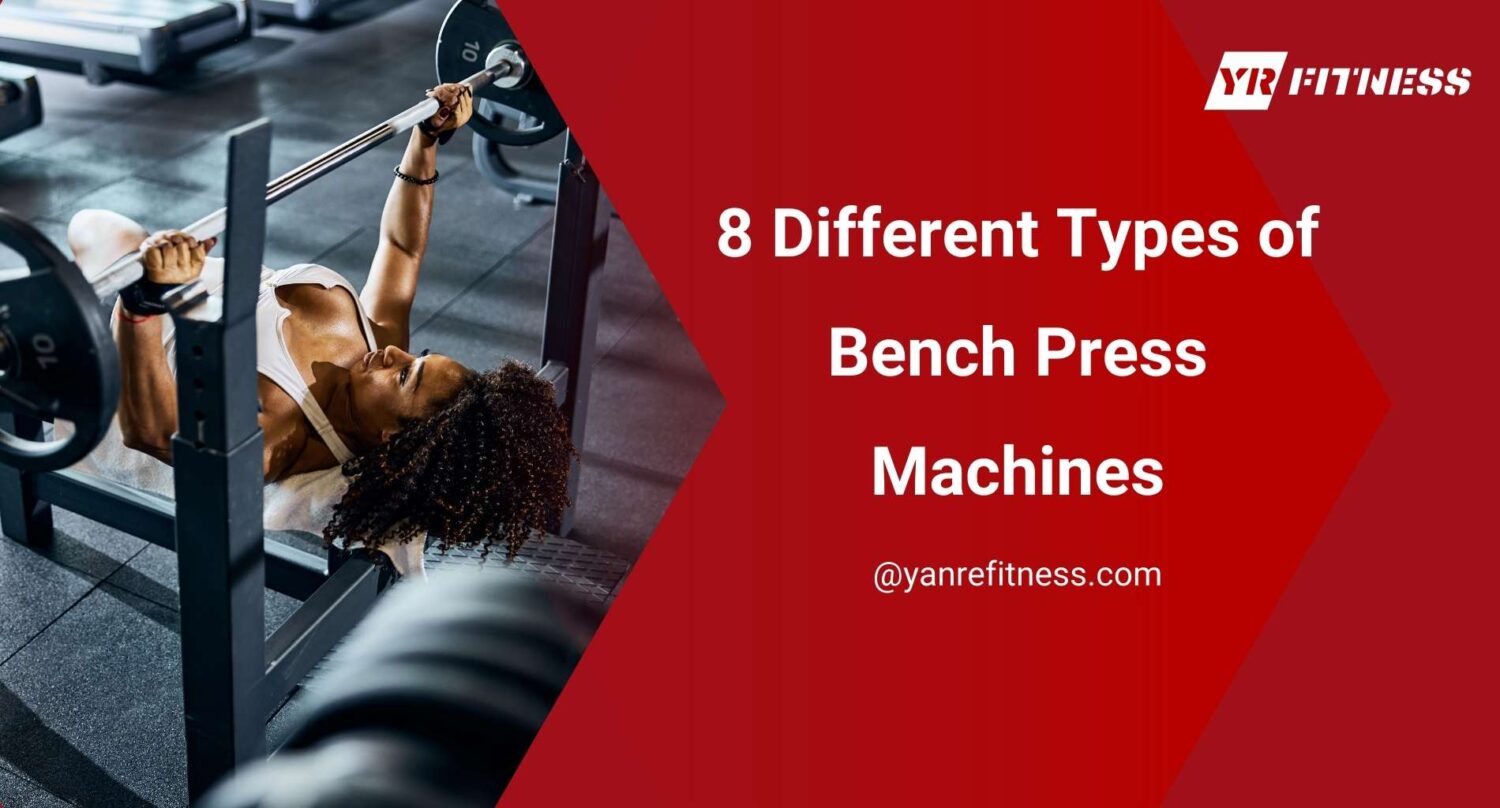A client once left my gym because we didn’t have the machine he was used to.
That stung.
He was polite about it. But I could tell it mattered to him. And it made me realize—bench press machines aren’t one-size-fits-all.
And that experiece taught me something important. The right bench can keep clients coming back. The wrong one? Not so much.
This article gives you a clear breakdown of the 8 types of bench press machines. You’ll know what each one does. And which ones make sense for your gym’s layout, budget, and members.
By the end, you’ll be ready to choose the right mix for your gym.
Let’s dive in!
Table of Contents
Comparison Chart
Before diving into the details, here’s a snapshot of all eight bench press machines. This gives you a fast look at how each one performs in function, setup, and gym fit.
Machine Type | Key Focus | Ideal For | Motion Type | Weight System | Footprint | Notable Benefit |
Seated Bench Press | Chest, shoulders | Beginners, seniors, rehab | Fixed, upright | Selectorized/Plates | Medium-Large | Great for safe, supported pressing |
Flat Bench Press | Mid-chest | All levels | Horizontal, fixed | Selectorized/Plates | Medium | Familiar, widely used machine |
Incline Bench Press | Upper chest | Aesthetic-focused users | Angled, fixed | Selectorized/Plates | Large | Adds upper chest definition |
Decline Bench Press | Lower chest | Advanced lifters, balanced training | Downward, fixed | Selectorized/Plates | Medium | Easier on shoulders, targets lower pecs |
Smith Machine (Vertical Press) | Full body + chest | Beginners, solo lifters | Vertical, guided bar | Free bar + plates | Large | Safe pressing with built-in catches |
Plate-Loaded Bench Press | Full chest | Intermediate to advanced lifters | Free-motion arc | Olympic plates | Medium-Large | Realistic feel with control |
Iso-Lateral Bench Press | Chest + symmetry | Corrective training, rehab | Independent arms | Olympic plates | Medium | Great for muscle balance and control |
Selectorized Chest Press | General chest | Beginners, quick circuits | Fixed press path | Selectorized | Compact | Easy-to-use, time-saving machine |
1. Seated Bench Press Machines
This was one of the first machines added during my gym’s early expansion. It didn’t just fill space—it filled a real need.
The upright position supports the back and controls the motion. That builds confidence. And for many gyms, that keeps members coming back.
This machine targets the chest, shoulders, and triceps, much like a traditional bench—but with more control and comfort.
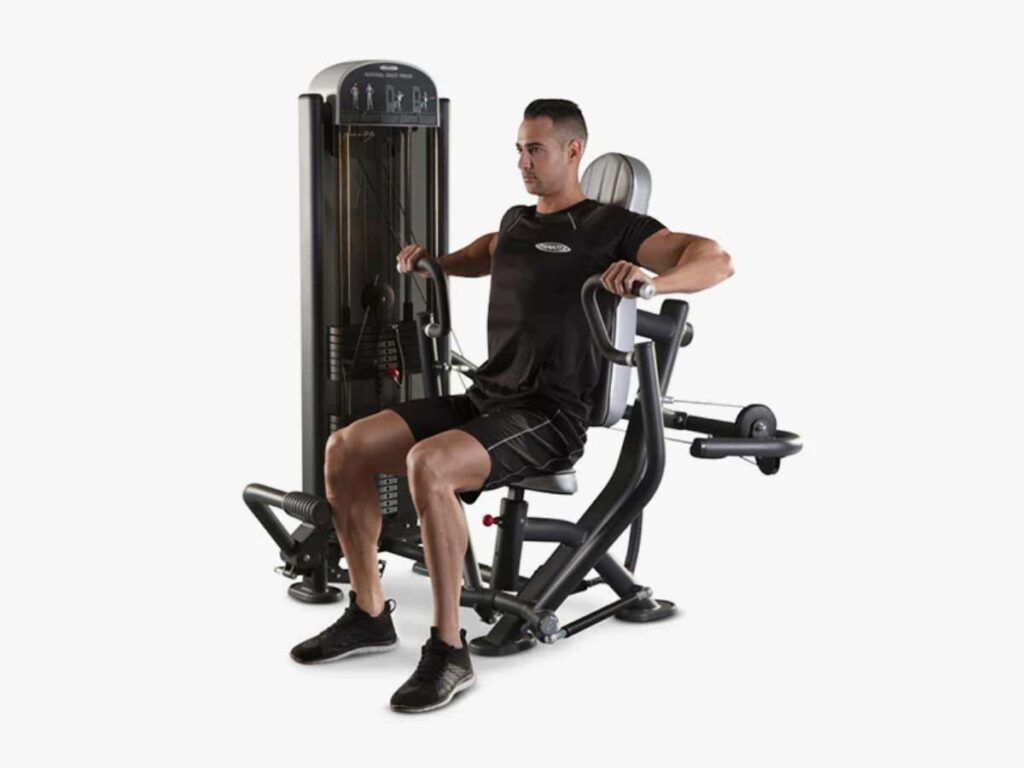
Features
- Padded Seat and Backrest: Helps your members maintain posture and reduces strain during pressing.
- Adjustable Handles: Makes it easy to accommodate a wide range of body types and arm lengths.
- Guided Press Path: Offers a fixed motion to promote better form and reduce injury risk.
- Weight System (Selectorized or Plate-Loaded): Choose what suits your gym—quick adjustments or heavier, customizable loading.
What To Consider Before Purchasing
- Who It’s For: Ideal if your gym serves general fitness, rehab clients, or those new to strength training.
- Floor Space: This unit takes more room than a flat bench. Make sure it won’t block flow or access—strategic gym layout design helps you place pressing stations without disrupting training flow.
- Weight Style: Selectorized systems are user-friendly. Plate-loaded gives experienced lifters more challenge.
- Motion Quality: Try before buying. A smooth press makes a big difference in member satisfaction.
Is This Worth The Investment?
Yes—especially for gyms that serve a broad range of members.
This isn’t just about building strength. It’s about building comfort and trust. A seated bench press machine can be the stepping stone that keeps members progressing.
2. Flat Bench Press Machines
This was the second machine I ever bought for my gym.
No hesitation. No second-guessing.
Why? Because it’s a classic.
Everyone from beginners to seasoned lifters—knows how to use it. That kind of familiarity builds comfort. It also builds trust.
The flat bench press machine mimics the barbell bench press but adds safety. There’s no need for a spotter. The movement path is fixed, which helps with consistency. And it focuses directly on the chest.
If your gym serves a wide range of members, this one gets used every single day.
Features
- Flat Bench Layout: Targets the mid-chest area with a natural horizontal push.
- Fixed Press Arms: Guides the user through a controlled movement path to support form.
- Adjustable Seat Height: Aligns the press with shoulder level for better mechanics.
- Multiple Grip Positions: Neutral and wide grips support joint comfort and training variety.
- Durable Frame: Built to handle repeated daily use across a range of member types.
- Selectorized or Plate-Loaded Options: Choose based on member strength levels and floor staff support.
- Rubber Foot Pads or Floor Anchors: Keeps the machine steady during repeated use.
What To Consider Before Purchasing
- Member Type: Great fit for beginner-focused gyms and general training facilities.
- Grip Variety: Machines with multiple grip options help prevent shoulder strain.
- Movement Feel: Try it first. Some designs feel better than others—especially for taller or broader users.
- Footprint: Needs adequate space around it for pressing and safe member movement.
Is This Worth The Investment?
Yes—flat bench press machines offer excellent value for gyms of all sizes.
They’re one of the most universally used pieces in a facility. Members recognize them and feel comfortable using them. That lowers the barrier to entry for beginners and still gives seasoned lifters a solid chest workout.

3. Incline Bench Press Machines
I’ll be honest—this wasn’t in my original gym setup.
I thought flat benches were enough. Until members started asking for ways to hit their upper chest more directly.
That’s when I added the incline bench press machine. And I haven’t looked back since.
This machine shifts the angle of the press to target the upper chest muscles. It also brings in the front delts and triceps. For anyone wanting that full, rounded chest, this matters.
It became a quiet favorite in my gym. Especially for those focused on aesthetics or muscle symmetry.
Features
- Inclined Bench Angle: Usually set between 30°–45° for upper chest activation.
- Fixed Press Arms: Helps control the lift and reduce shoulder strain.
- Adjustable Seat: Aligns chest level with pressing handles for proper form.
- Neutral and Standard Grips: Adds variety and reduces joint stress.
- Weight Options: Comes in selectorized and plate-loaded formats.
- Reinforced Frame and Padding: Built for comfort and repeated use.
What To Consider Before Purchasing
- Gym Focus: Perfect for bodybuilding-focused gyms or those offering upper-body specialization.
- Space Needs: Taller and longer than flat benches—make sure it fits well.
- Incline Range: Fixed incline works, but adjustable offers more value.
- Handle Comfort: Some grips feel more natural—try a few before buying.
Is This Worth The Investment?
Absolutely—especially for gyms where members want more than just the basics.
This isn’t just about variation. It’s about results. Many lifters see better upper chest development once they start using this regularly.
It also supports safer lifting angles for those who’ve had shoulder issues. And in a competitive gym market, variety like this helps your facility stand out.
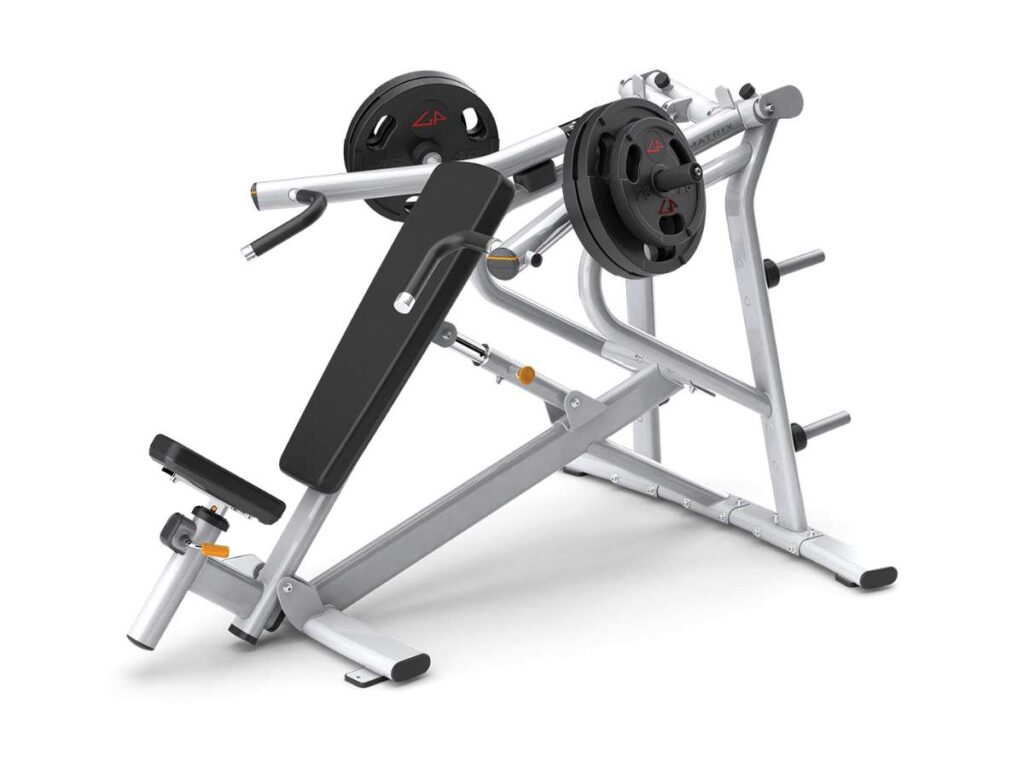
4. Decline Bench Press Machines
Most gyms skip the decline bench press machine. That’s a mistake.
When this was finally added to the floor, the feedback was instant. Lifters noticed the difference. Shoulder tension dropped. Lower chest activation went up.
The design places the body at a downward angle. That angle shifts focus to the lower portion of the pectoral muscles. It also recruits the triceps and reduces shoulder stress during pressing.
While it’s not the first bench members line up for, it quietly becomes a favorite—especially for serious lifters who want complete development.
Features
- Declined Bench Angle: Typically set between 15°–30° to better engage the lower chest.
- Leg Lock-In Pads: Keeps the body from sliding, adds stability throughout the press.
- Fixed Press Arms: Supports consistent range and helps control form.
- Grip Variety: Neutral and wide handles offer pressing flexibility.
- Selectorized or Plate-Loaded: Works for all fitness levels.
- Compact Footprint: Easier to fit into smaller gym layouts.
What To Consider Before Purchasing
- User Demand: Works well in gyms focused on strength, physique, or chest specialization.
- Comfort and Lock-In: Quality leg pads make a big difference—check for comfort and adjustability.
- Angle Preferences: Some members may prefer less steep decline—look for models with a natural feel.
- Machine Balance: Should feel solid and steady, especially under heavier loads.
Is This Worth The Investment?
Absolutely—especially if your gym already offers flat and incline presses.
This bench fills in that last training angle. It brings balance to chest day routines. And for members dealing with shoulder discomfort, it offers a valuable alternative to the flat bench.
Even if it’s not the most-used machine, those who need it will keep coming back to it.
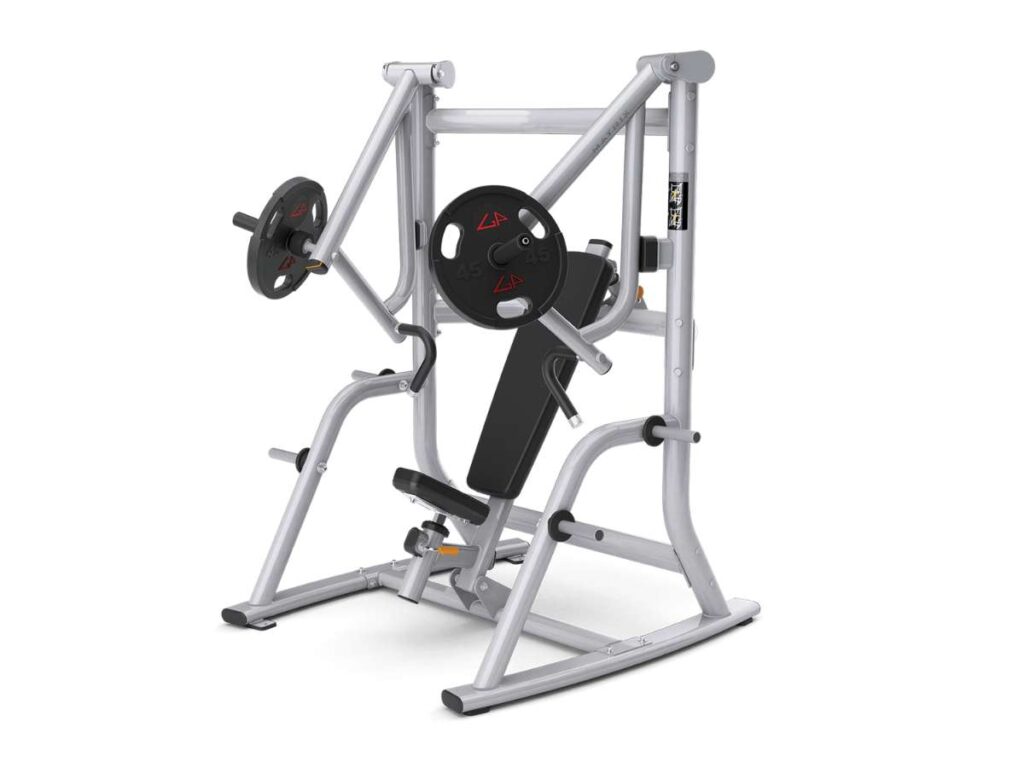
5. Vertical Bench Press Machines (Smith Machines)
Smith machines spark strong opinions. Some lifters love them. Others call them “cheating.” But in a gym setting? They earn their place.
These machines are essentially vertical bench press systems with a guided barbell track. They allow controlled pressing without needing a spotter. That makes them a favorite for beginners and solo lifters.
Features
- Guided Vertical Bar Path: Keeps the bar moving straight up and down, reducing risk of wobble.
- Safety Locks: At YR Fitness, the smith machines are often equipped with built-in safety mechanisms that can be activated with a twist of the wrist. These safety locks can be a reassuring feature for solo lifters and can enhance the gym’s safety profile.
- Adjustable Bench Positions: Can be used flat, incline, or decline under the bar.
- Counterbalanced Barbell: Some models make the bar lighter for new lifters.
- Multi-Use Frame: Supports pressing, squats, lunges, and more.
- Plate Storage Pegs: Keeps weights organized on the frame.
What To Consider Before Purchasing
- Member Skill Level: Best suited for beginners or those without a spotter.
- Training Variety: Works for presses, rows, and even legs—adds versatility.
- Bar Weight: Some bars feel lighter due to counterbalance—important for programming.
- Build Quality: Look for smooth gliding and a solid locking system.
Is This Worth The Investment?
Definitely—especially for gyms focused on general fitness or beginner training.
The vertical Smith machine makes weight training more accessible. It helps build form, confidence, and safety. I’ve seen new members try their first press here—and come back to it again and again.
At YR Fitness, our gym equipment is designed to support progress from day one. Once you add this machine to your gym, your clients will keep coming back for more.
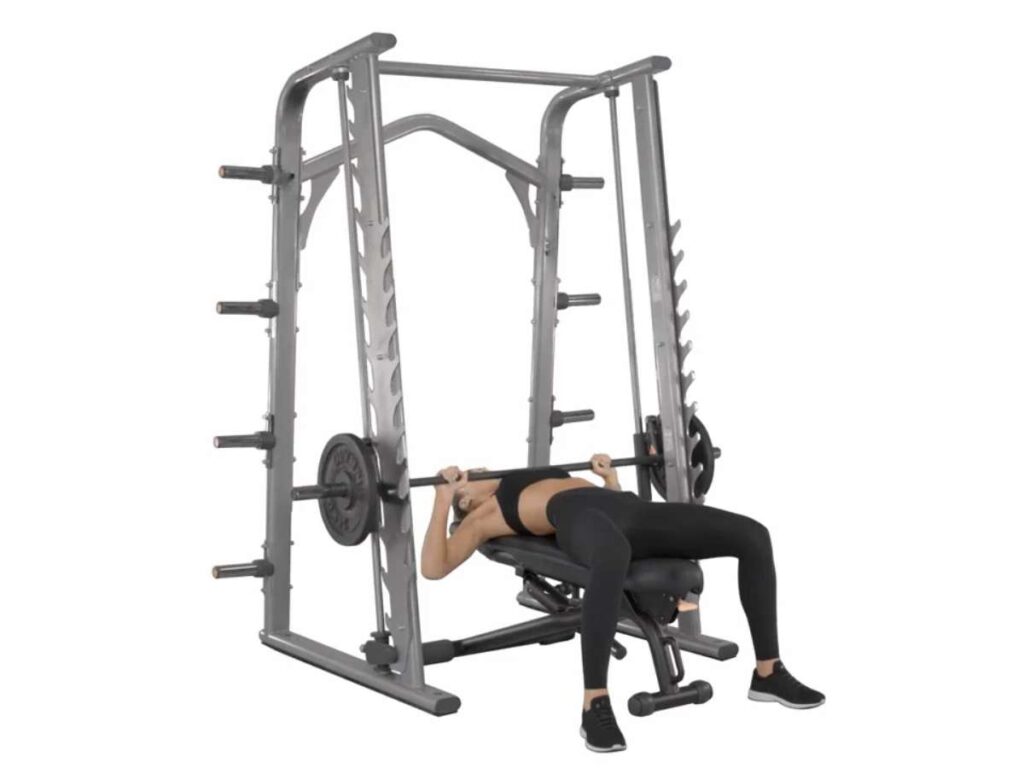
6. Plate-Loaded Bench Press Machines
Some members in my gym prefer to move heavy weights without dealing with a barbell. That’s where plate-loaded bench press machines come in.
These machines mimic free-weight pressing, but with more stability and a fixed path. They still use Olympic weight plates, giving lifters that loaded feel they enjoy—just with more control and less risk.
Plate-loaded benches hit that sweet spot between machines and free weights. Great for experienced lifters who want freedom, but still appreciate the support of a structured setup.
They also hold up well in high-traffic gyms.
Features
- Plate-Loading Pegs: Compatible with standard Olympic plates for easy weight changes.
- Independent Arm Movement: Some models allow each arm to press separately.
- Angled Press Path: Mimics the natural movement of a free-weight bench press.
- Heavy-Duty Frame: Built to handle intense use and heavier loads.
- Adjustable Seating: Helps align the chest and shoulder position.
- Wide and Neutral Grips: Gives lifters pressing variety.
- Rubber Foot Pads: Prevents sliding during use.
What To Consider Before Purchasing
- Member Strength Levels: Great for intermediate to advanced users who like loading plates.
- Space and Plate Storage: Requires nearby plate trees or built-in storage.
- Press Feel: Look for machines that offer smooth, natural movement under load.
- Arm Motion Type: Decide if fixed or independent arm movement suits your training needs better.
Is This Worth The Investment?
Absolutely. This machine gives your members a powerful pressing option that feels more “real” than selectorized models. It’s often the go-to for lifters during peak hours. It handles abuse, loads heavy, and still keeps form tight.
If your gym caters to serious strength training, this machine pulls its weight.
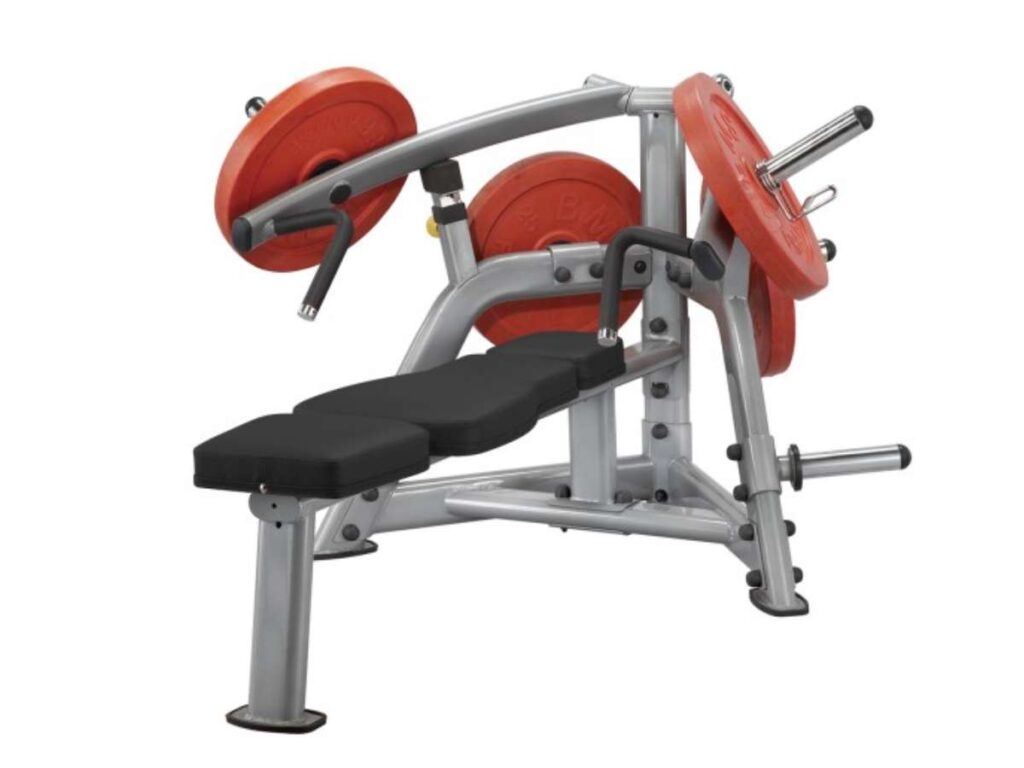
7. Iso-Lateral Bench Press Machines
Smith machines spark strong opinions. Some lifters love them. Others call them “cheating.” But in a gym setting? They earn their place.
Iso-lateral bench press machines are essentially vertical bench press systems with a guided barbell track. They allow controlled pressing without needing a spotter. That makes them a favorite for beginners and solo lifters.
Smith machine became a daily-use tool. Especially during busy hours, when free benches were taken. It gave people an easy way to press safely and keep their routine going.
Features
- Independent Arm Motion: Each arm presses separately to help correct strength imbalances.
- Angled Press Path: Follows a natural arc, much like dumbbells or a barbell press.
- Adjustable Seat and Backrest: Allows proper setup for lifters of different sizes.
- Plate-Loaded Design: Uses standard Olympic plates for resistance.
- Sturdy Handles: Offers both neutral and wide grip options.
- Wide Base: Keeps the machine solid under heavier loads.
What To Consider Before Purchasing
- Member Focus: Especially useful for personal training and corrective programs.
- Motion Type: Machines with converging arms usually feel more natural.
- Stability: Look for a strong base that won’t shift during one-arm reps.
- Plate Storage: Make sure plates are within easy reach—this one will use them.
Is This Worth The Investment?
Absolutely—especially if your gym supports serious lifters or offers rehab-focused sessions.
This machine might not get as much attention as others. But the people who use it? They love it.
I’ve seen lifters go from uneven reps to smooth, powerful movement in just weeks. It builds strength, but more than that, it builds trust in your body again.
If you care about helping members train smarter and stay balanced, this is a solid piece to have on your floor.
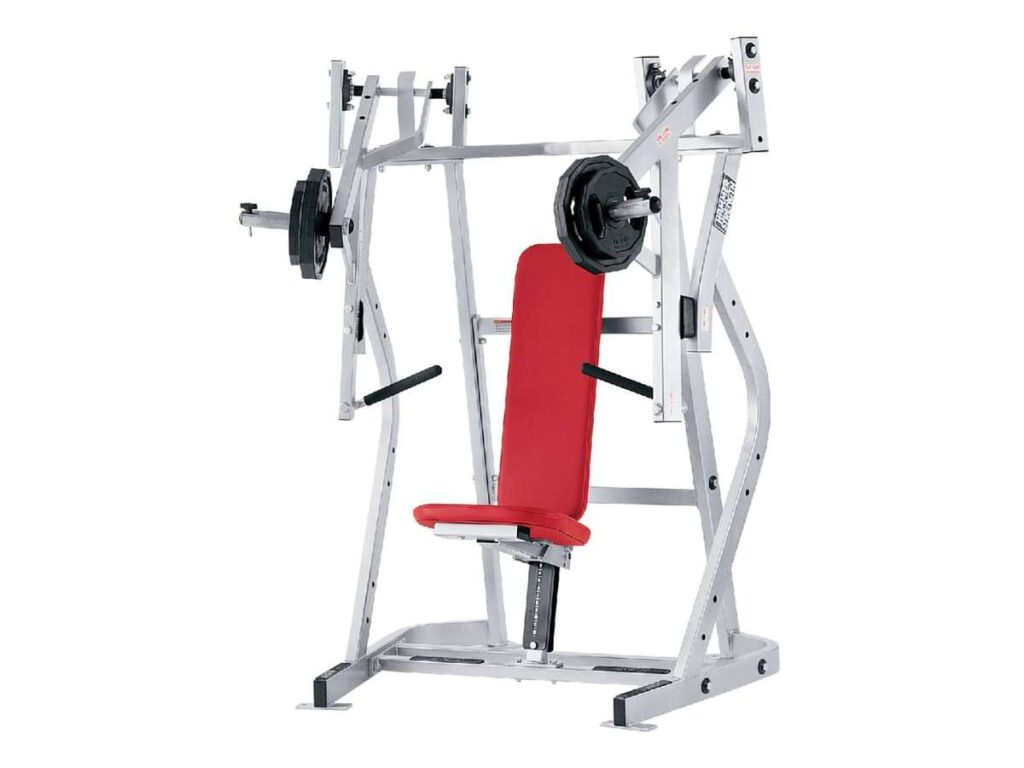
8. Selectorized Chest Press
Selectorized chest press machine uses a built-in weight stack with a pin system. No need to load or unload plates. Just adjust the seat, pick the weight, and start pressing. It’s straightforward and fast.
For beginners, older members, or anyone short on time, this machine makes chest training easy. I’ve watched so many people go from nervous to confident using this press as a starting point.
It’s not flashy. But it works.
Features
- Weight Stack System: Uses a pin-selector to quickly adjust resistance.
- Fixed Press Arms: Keeps movement controlled and consistent.
- Ergonomic Handles: Often curved for joint comfort and grip variety.
- Adjustable Seat Height: Helps align chest and shoulders with pressing arms.
- Compact Design: Fits easily into smaller gym spaces.
- Shrouded Frame: Covers the weight stack for safety and clean appearance.
What To Consider Before Purchasing
- Target Users: Best for beginners, general fitness clients, and time-conscious members.
- Ease of Use: Should be intuitive and clearly labeled.
- Press Feel: Some machines feel stiff—try before choosing.
- Maintenance Needs: Check cable quality and internal wear parts.
Is This Worth The Investment?
Absolutely—especially if your gym welcomes beginners or wants faster workout flow.
This is a confidence-builder. It removes barriers that hold people back from strength training. I’ve seen new members stick around because this machine made lifting feel less scary.
It’s also great for circuit training and busy times, when speed matters.
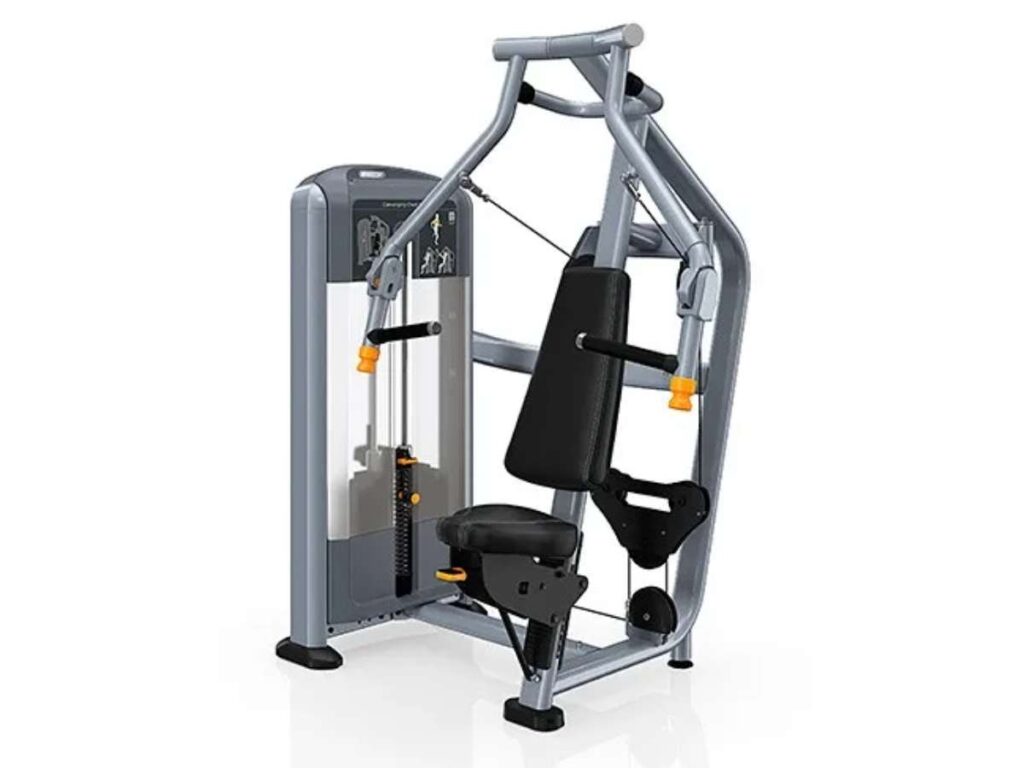
Conclusion
I’ve made mistakes—bought the wrong bench, skipped one I thought I didn’t need.
But every fix made my gym stronger. Now it’s your turn.
This guide gave you a full view of the 8 types of bench press machines. Each one has a purpose. Each one serves a lifter.
Start now. Upgrade smart. Grow with purpose.
What’s the one machine your gym is missing?
Contact YR Fitness today and bring better strength solutions to your floor!
Related articles:
